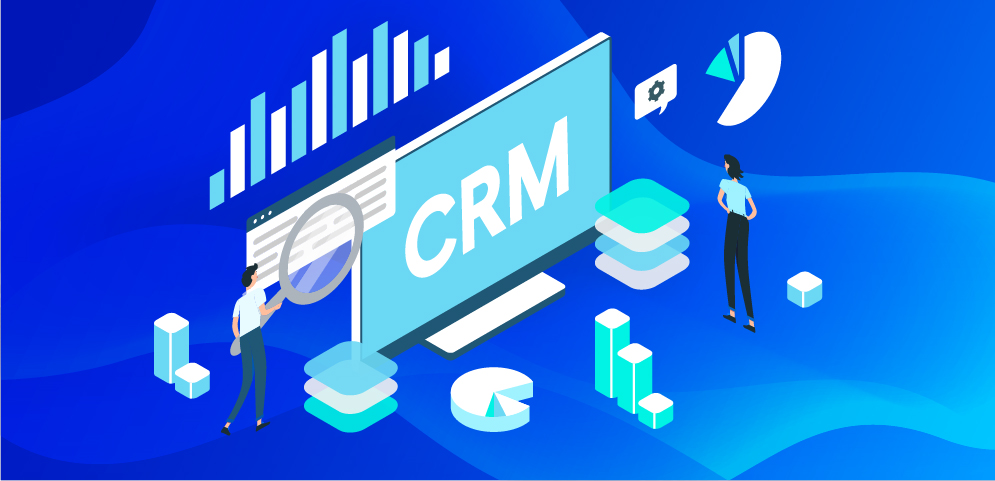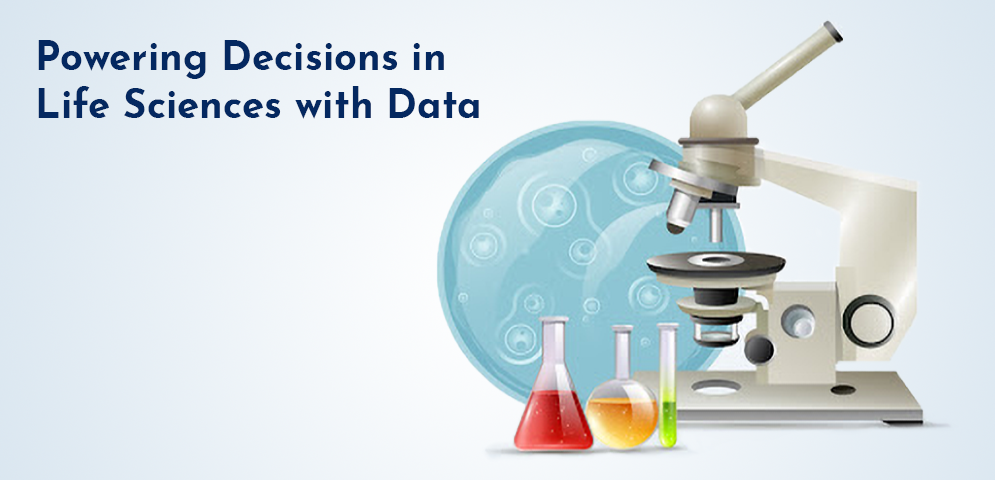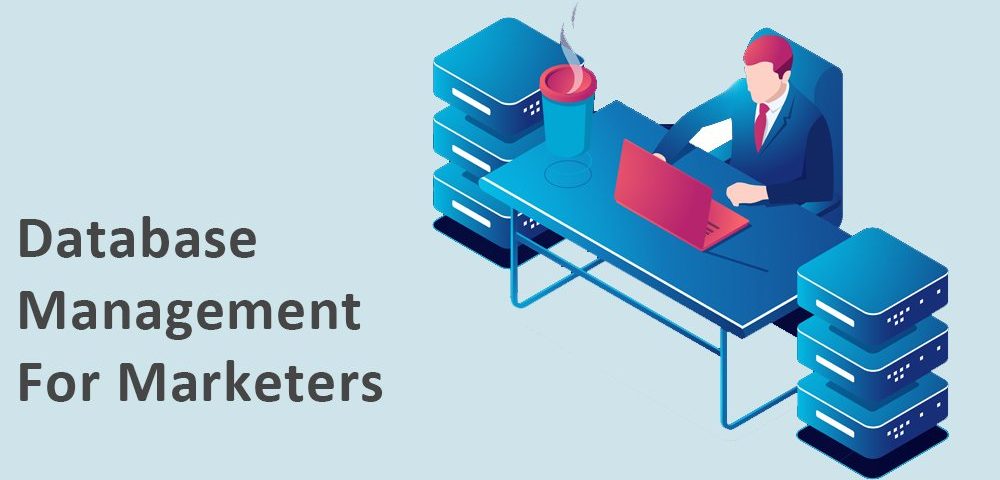
A Quick Guide to Marketing Data Enrichment for generating leads
Published on 6th January,2021 Last Updated on 5th January,2024
Marketing Data Enrichment
CRM databases are very important to marketers and salespeople when it comes to running email and advertising campaigns. All the information about your customers and prospects stored in your CRM, and also augmented by third parties, can be termed as marketing data or customer data and is useful for marketing and sales processes.
The health of your marketing database directly determines the outcome of your campaigns, and in order to have a healthy CRM database you need data enrichment on a regular basis.
Marketing Data enrichment is important to marketers because it helps them gain a more comprehensive view of their customers by merging raw data points with similar data points in a larger database. This process is also known as data augmentation or appending.
By enriching marketing data, businesses can understand their clients’ needs better and make more informed decisions.
Marketing data enrichment is also important for improving data quality, which refers to the accuracy, completeness, reliability, and relevance of your business data. The quality of your data is the foundation of accurate analysis and is key to helping ensure that teams across your organisation trust your data for making important decisions.
Moreover, marketing data enrichment is at the core of numerous online businesses these days. It is used to empower companies to fight fraud efficiently, as well as source alternative data for credit scoring, find their most valuable customers, and so on.
Customer Data Enrichment
Very similar to the above process, customer data enrichment is the process of combining existing first-party data on your customers with third-party data from external sources to add more information. For example, your first-party consumer data could contain information on their shopping habits on your website or at your store, but may not include other information on their brand preferences, hobbies, etc.
By enriching your existing customer data, you could uncover more details like their home and work locations, their hobbies and interests, and their brand affinities. This enriched data can enable you to make informed decisions, expand your audience base, and offer personalised customer experiences at scale.
Customer data enrichment helps you access new information about your customers, and enrich the customer profiles in your CRM. This helps you deliver more personal experiences throughout the customer journey.
Sales Data Enrichment
Data enrichment is not just helpful to marketing but to sales as well. Firstly, it allows the marketing team to segment and score leads, and then hand them over to the sales team. It allows them to accurately define what a sales-ready lead is. These added layers of information help sales to know the prospect better, target them with a more relevant pitch, and close deals faster.
Sales database enrichment is relevant to salespeople because it allows them to benefit from more information without expecting the prospect to provide it. This means that their campaigns will be more carefully targeted and ultimately more effective. Enriched sales data enables sales teams to use additional insights to create the right messaging and address the prospect’s need through data-driven intuition. Key benefits of sales data enrichment include better targeting and segmentation, effective lead nurturing, higher conversion rates, and increased sales opportunities.
If the sales rep has access to accurate data, it saves on a lot of time spent, and in turn, the cost incurred would be much less.
Bad data is highly expensive for organisations. Sales reps spending their time chasing incorrect leads is both time-consuming and expensive.
Sales enrichment helps your team improve their workflow in these ways:
- Ensures that the correct information is received in order to begin warming up a lead.
- Sales lead enrichment allows teams to prioritise leads based on their likelihood of converting.
- It guarantees that the lead is routed to the correct team/salesperson.
- It provides deep insight on the needs and pain points of the prospect.
Generating value for marketing from customer data enrichment
Unlocking the power of customer and lead data:
The data already existing in your CRM database is very valuable and contains insights that can be used for various marketing and sales activities. It not only provides a better customer experience, but also enables you to target new prospects, and turn them into customers. This way you can drive more revenue from advertising campaigns, and retain existing consumers.
Customer data is invaluable for marketers, and since customer databases are growing on a daily basis, and provide us with new touchpoint opportunities, there is a strong need for them to be updated regularly.
In-house first-party data can be a limited source of information, and if you use that alone, you may be missing critical pieces of the puzzle. While you can see purchases and shared information from your customers, you don’t know where they go before and after buying from you. Real-world data has the potential to offer immense business benefits across segments when added to first-party data.
Key Benefits of Marketing Data Enrichment
A deeper look into how marketing data enrichment helps your organisation.
Turbocharge lead scoring:
The more data you have, the more accurate your lead scoring will be. Marketing data enrichment can attach critical new information to your leads to make each lead score significantly more accurate. For example, a lead enters your system by filling out a lead capture form like first name, last name, and personal email address. Marketing data enrichment can augment such leads with additional information, like a business email address, job title, and location, which helps you recognize the visitor as a decision maker at one of your target accounts.
Targeted Messaging and Lead Conversions:
The most important benefit of sales data enrichment is improving lead generation and conversions. By far the most common reason why companies procure third-party data is to get new prospects, whether they’re accounts, contacts, or “total addressable market”.
There are improvements across key business operations such as prospect profiling and targeting highly qualified leads, identifying lookalike prospects, targeting ads and email campaigns, personalisation of messaging, and increasing overall campaign efficiency.
Accurate data helps you identify leads that fit your ideal customer profile, and this empowers you to spend your precious time going after leads who love your solution.
Enhancing Existing Marketing Databases:
Marketing data enrichment helps to make your data better in terms of completeness, accuracy, and recency. Marketing data enrichment serves the purpose of filling in the gaps left by incomplete or incorrect information. The first-party data you already have can be matched with data from various other sources like data vendors and data collected manually from the web.
A system for data enrichment then appends new information to the records that are already captured and stored, pinpointing key target groups of prospects or improving efficiencies across your campaigns.
With marketing data enrichment, you can create highly detailed and accurate unified profiles of your customers by gathering data from a variety of external sources, then combining that with your own proprietary data. Once you’ve got the profiles right, you can use them, update them, and add new data to each profile about what each customer finds appealing and persuasive enough to close a sale.
Validating First and Third-Party Data:
Even if your data is complete and accurate, there is often the need to verify the data with another third-party. For example the data in your CRM may not have been updated in the last 12 months, so it’s a good idea to validate if it is still accurate. Secondly, if you’ve just acquired a list of prospects but don’t have the utmost confidence in the data source, it’s good to validate some aspects of the data, such as email deliverability, before loading it into your systems.
Segment and organise your data:
Marketing data enrichment allows you to segment and organise your customer data into similar groupings. This improves your ability to create personalised campaigns.
These new segments may appear after cleaning and unifying your own data from various silos. Or, they may be revealed after augmenting your data with newly added third-party data. These segments can then be used to power targeted campaigns across a wide range of channels.
Recognise buying intent:
Some data enrichment platforms help you keep abreast of your customers’ online behaviour, spot buying intent, and capitalise on it.
For instance, you can learn that one of your target leads recently spent time researching competitors on a software review website. The sales rep can then swoop in and provide them with a case study or product comparison guide to help them with this research and win their favour.
Revive old sales leads in your CRM:
Trigger events built into your sales data enrichment platform are great for finding free sales leads. You will be notified of leads’ promotions or office expansions that indicate a lead who formerly dropped out of the funnel may now be a good fit for your offer.
For example, sales triggers might inform you that a big target company you haven’t heard from in a while recently opened a new office and doubled its workforce. For a savvy salesperson, that can be all they need to get their foot in the door.
Expand your reach with new segments and markets:
Some companies use customer data enrichment to test and experiment with different markets or expand the scale of their campaigns. A third-party data provider’s total audience can be added to your databases and then analysed for patterns of similarity with your own proprietary customer data. This can help you identify new customers and segments for targeted personalization.
Make new customer acquisition easy:
Increasingly, marketing and sales are focused on building smaller, more detailed lead profiles because they’re the most likely to convert. Customer data enrichment gives you in-depth insights into your customers so that you not only know your current customers better, you can also build more sophisticated buyer personas. This data might be the answer to helping you understand whether your buyer personas are valid. With deeper insights, you can improve customer acquisition strategies because you’re always talking to the right people at the right time in their buying journey.
Improve customer experience with better customer journeys:
Enriched customer profiles are really the starting point for a better customer experience. The more conclusions and insights you’re able to draw from your customer data, the more accuracy you’ll have giving customers what they want. When you’re able to identify customer hobbies, interests, likes, devices, and channels, you can design each touch point and message to meet customers exactly where they’re at in the customer journey. For example, you can direct them to content that’ll inform them of new ways to use your product. Are some features particular to their individual use case? When you know these answers, you can anticipate customer needs to deliver exceptional experiences.
Customise offers and customer experiences:
Customers don’t all use your product the same way. Different segments will value some features over others. When each customer begins using your product, behavioural analytics will tell you which group they fall into. At that point, you can guide them toward content and features that their group values.
Say your company specialises in marketing tools. Your customers typically fall into two categories: startups and mid-size firms. Startups value product tours that demonstrate lead generation and conversion features. In contrast, established mid-size firms value marketing automation. With customer data enrichment, you’ll know exactly which features to highlight as soon as they sign-up.
Personalise your outreach:
Personalised outreach is a marketing strategy that aims to tailor the content of the outreach to the specific needs of the customer. Marketing data enrichment can help in personalised outreach by providing more information about the customer, such as their interests, preferences, and behaviour patterns.
This information can be used to create more targeted and effective outreach campaigns that are more likely to resonate with the customer. With data, you can also more accurately predict a lead’s pain points. And you can include these in your cold email or cold call to spark their interest. Thus they will be targeting the right customers with the right message at the right time. It also helps build customer loyalty because it helps customers feel like your organisation understands them.
Running targeted ad campaigns:
Marketing data enrichment tools can also provide you with the data you need to launch more targeted advertising campaigns for the specific demographics you want to reach with messaging about your products or services.
Revolutionising Database Outsourcing through Partnerships in Data Research
[dsm_perspective_image src="https://www.ascentrik.com/wp-content/uploads/2020/03/Outsourcing-in-b2b-research-995x480-1.jpg" title_text="Building Trusted Partnerships in Database Outsourcing" align="center" force_fullwidth="on" _builder_version="4.26.1"...
Technology and the Future of Life Science Innovation
[dsm_perspective_image src="https://www.ascentrik.com/wp-content/uploads/2020/11/powering-decisions-in-life-sciences-with-data-1.png" title_text="powering decisions in life sciences with data 1" align="center" force_fullwidth="on" _builder_version="4.6.6"...
How can Customer Databases be used Effectively by Marketers?
[dsm_perspective_image src="https://www.ascentrik.com/wp-content/uploads/2020/03/database-marketing-1000x480-1.jpg" title_text="database-marketing-1000x480" align="center" force_fullwidth="on" _builder_version="4.16" _module_preset="default" width="80%"...


